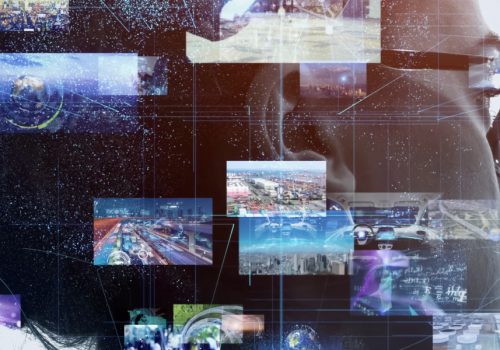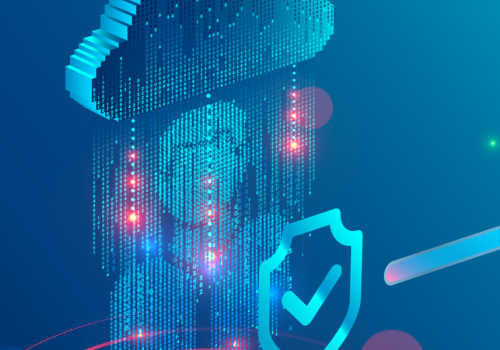Our human evolutionary path continues to merge phenomenally with artificial intelligence (AI). As 2030 approaches, AI integration is expected to exceed well over 80% in all sectors, according to the World Economic Forum, highlighting the need to ensure that the risks associated with the development, deployment, and use of AI are well understood and managed responsibly for trustworthiness. AI trustworthiness based on the ISO/IEC 22989:2022 Information technology — Artificial intelligence — Artificial intelligence concepts and terminology is highlighted as:
- Meet stakeholders’ expectations
- AI robustness
- AI reliability
- AI resilience
- AI controllability
- AI explainability
- AI predictability
- AI transparency
- AI bias and fairness
These requirements emphasize the need for good governance and risk awareness, risk management, continuous monitoring, and improvement as integration becomes evident (transparently) through everyday human enhancements and activities, automation, functions, and processes.
With the expansion of the business threat landscape due to digital transformation and the subsequent strengthening of cybersecurity to mitigate cyber risks, cybercriminals are utilizing the power of AI, creating and expanding further cyber risks through the enhancements of 1) vishing, phishing and social engineering campaigns, 2) specialized automated tools, and 3) tactics and techniques to attack, compromise and breach organizations. Furthermore, cybercriminals’ threat to AI operations is of critical importance since the development and deployment of AI are still largely ungoverned (due to competitive innovation at the state level) and operationally non-transparent to the operator or user.
Further to the World Economic Forum’s Global Cybersecurity Outlook 2025 Report, 68% of organizations do not have processes to assess AI security before deployment. This inadequate governing vulnerability can create emerging risks that can negatively affect government institutions, organizations and their clients, stakeholders, and customers, thereby, creating public safety issues (in healthcare, power generation, supply chain, water and waste management, etc.), including unexpected circumstances and outcomes, whether political, economic, social, or cultural. Such societal risks at scale can become underlying national security issues if AI is not risk-assessed, monitored, and governed responsibly.
The global cost of cybercrime is expected to reach approximately U.S. $10.5 trillion in 2025 and U.S. $19.7 trillion by 2030.
According to the World Economic Forum’s Global Cybersecurity Outlook 2025 Report, the risk surrounding cybercrime with organized crime becomes a very concerning and critical matter. For example, we have seen attacks on critical national infrastructures (CNI), such as healthcare, oil pipelines, and water management systems, resulting in public safety issues. These types of attacks are increasing public awareness and safety concerns surrounding CNI and its cybersecurity posture. The new face of cybercrime and its utilization of AI to achieve its criminal objectives has become a national security concern. Therefore, AI can become a national security risk if not responsibly governed, developed, deployed, and utilized.
AI and Cybersecurity
The Tactics, Techniques, and Procedures (TTPs) of the highly structured and organized cybercriminal syndicate (criminal enterprise) are becoming more sophisticated and complex. With the use of generative AI, the efficacy of those TTPs is becoming more predominant, highly developed, and advanced, as seen through the sophistication of malware, deepfake audio, pictures and videos, vishing, social engineering, and phishing attacks. Some AI tools used by cybercriminals to commit cybercrime are:
- WormGPT
- FraudGPT
- GhostGPT
- Google Gemini
- HackerGPT
Understanding the necessity to defend against these advanced persistent threats (APTs), cyber defense strategies require AI-integrated cybersecurity tools to be highly efficacious and efficient in detecting and responding to these dangerous threats, which are highly sophisticated and complex, reducing the risks resulting from such attacks. That is, fight criminal AI with good AI!
For the last seven years or so, we have seen companies such as Palo Alto Networks, Darktrace, CrowdStrike, and Check Point utilizing AI throughout their ecosystem of cybersecurity tools and services to remediate and mitigate cyber threats. Being one step ahead of cybercriminals is crucial in reducing cyber risks to the business that can cause public safety issues, digital liabilities, breaches, operational losses, etc. These are some of the varying business risks that affect the mission, board strategic direction and governance, and business well-being.
Not only is AI used in cybercrime and other organized criminal activities, but cybercriminals are attacking AI tools and services utilized by all business sectors. This poses the greatest threat to AI systems that lack adequate security controls, affecting their operations and trustworthiness. Threats to AI take on the following forms shown below (complete list on Mitre ATLAS):
- Machine Learning (ML) supply chain compromised
- Tampering (poisoning) of data used in AI training
- Attacks on the Large Language Models (LLM) (indirect prompt injection, jailbreaks)
- AI availability
- Access and exfiltration of confidential and private data utilized by AI
The evolution of AI combined with the competitive nature of getting to market first has seen grave risks to AI trustworthiness due to vulnerabilities in its development and deployment, which cybercriminals can exploit (Threat actors jailbreak DeepSeek, Qwen AI models to generate ‘malicious’ content: Report, 2025). Such exploitations create serious risks for all sectors, especially CNI, such as financial institutions, governments, education, healthcare, etc. For example, the exploitation of the generative AI DeepSeek highlights the risks associated with AI and its vulnerabilities.
Due to these high-level risks, as highlighted in the OECD “Framework for the Classification of AI Systems” report and the EU AI Act, risks surrounding AI must be governed and risk-managed well, thereby reducing risk to public safety, organizations, systems, democracies, etc.
Managing risks surrounding AI requires governance and risk awareness, risk management, and continuous monitoring and improvement in the AI Management System (AIMS) program to uphold AI Principles, as noted in the OECD Framework for the Classification of AI Systems
- Inclusive growth, sustainable development, and well-being
- Human-centered values and fairness
- Transparency and explainability
- Robustness, security, and safety
- Accountability
Such an AI Management System (AIMS) program can be based on the auditable ISO/IEC 42001 standard.
The ISO-standardized AIMS was created to:
- Reduce risks surrounding the development, deployment, and utilization of AI
- Enable the responsible and ethical use of AI
- Develop, deploy, and utilize AI in a trustworthy manner
- Develop, deploy, and utilize AI in the context of the organization, institution, etc.
Consequently, building a responsible and trustworthy AI System, as highlighted by the European Commission High-Level Expert Group on AI (AI HLEG) Ethics Guidelines for Trustworthy AI, will require thorough strategic support that a holistic standard, such as the ISO/IEC 42001 AIMS, can provide through guidelines and directions, including the ability to be internationally audited as a management system.
Managing Risk Surrounding AI
As highlighted in the previous paragraphs, the risks surrounding AI are critical as its evolution and integration continue to merge into intricate and non-transparent operations. Mediating risks to AI and mitigating AI risks in designing, deploying, and utilizing AI is crucial in creating a responsible and trustworthy AI system. Stating it differently, a risk-based approach to each phase of the AI lifecycle makes AI trustworthy.
Organizations, governments, and non-governmental organizations implementing an AIMS based on the ISO/IEC 42001 standard will be able to achieve AI strategic goals through governance, risk management, and continuous monitoring and improvement of controls.
The ISO/IEC 42001:2023 AIMS standard structure is as follows:
- Clause 4 – The Organizational Context
- Clause 5 – Leadership
- Clause 6 – Planning
- Clause 7 – Support
- Clause 8 – Operation
- Clause 9 – Performance Evaluation
- Clause 10 – Improvement
- Annex A (Normative) – Reference control objectives and controls
- Annex B (Normative) – Implementation guidance for AI controls
- Annex C (Informative) – Potential AI-related organizational objectives and risk sources
- Annex D (Informative) – Use of the AI Management system across domains and sectors
The following standards and regulatory frameworks surrounding AI Systems enrich the ISO/IEC 42001:2023 Information Technology — Artificial Intelligence — Management System Standard:
- ISO/IEC FDIS 42005 Information technology — Artificial intelligence — AI system impact assessment
- ISO/IEC FDIS 42006 Information technology — Artificial intelligence — Requirements for bodies providing audit and certification of artificial intelligence management systems
- ISO/IEC 22989:2022 Information technology — Artificial intelligence — Artificial intelligence concepts and terminology
- ISO/IEC 38507:2022 Information technology — Governance of IT — Governance implications of the use of artificial intelligence by organizations
- ISO/IEC 23894:2023 Information technology — Artificial intelligence — Guidance on risk management
- ISO/IEC TR 24028:2020 Information technology — Artificial intelligence — Overview of trustworthiness in artificial intelligence
- ISO/IEC 23053:2022 Framework for Artificial Intelligence (AI) Systems Using Machine Learning (ML)
- NIST Artificial Intelligence Risk Management Framework (AI RMF)
- EU AI Act
Governance
Tackling the risks surrounding AI must be governed and managed holistically, through:
- Governmental national AI strategies, policies, laws, and regulations—OECD AI Principle—Recommendations for Policymakers—Principle 2.3
- Corporations’ adherence to policies in compliance with laws and regulations, in addition to boards supporting programs throughout the organization, enhances compliance further with policies, which can initiate necessary cultural changes.
- Public-private partnership (PPP) collaboration to support innovation, expertise capacities, technology change and evolution awareness, and aid in the timely creation of fair legal frameworks—OECD AI Principle—Recommendations for Policymakers—Principle 2.5.
- International partnerships to further collaborate and acquire additional expertise, allowing for comprehensive and fully documented activities and processes in creating global policy frameworks to responsibly develop, deploy, and use AI, upholding AI principles—OECD AI Principle—Recommendations for Policymakers—Principle 2.5.
The success of any program must be driven at the highest level, whether in government or an organization, to achieve its strategic objectives and cultural changes through mature development. Therefore, if the ISO/IEC 42001, Clause 5 directive for leadership is applied, leadership commitment to the AIMS, the establishment of AI policy, and support for human resources can be realized.
The implementation of governance committees with responsibility and accountability for the AIMS program will allow the development of AI risk-aware policies, supporting AI trustworthiness and responsible development, deployment, and utilization.
In addition to the general AI Policy (guided by the ISO/IEC 42001, Annex A/B.2.2 AI Policy statement guidance), the following sub-related policies will exist: AI ethics policy, data governance policy, privacy policy, AI human-resources policy, AI transparency policy, responsible AI deployment policy, etc.
Governance committees understanding the factors that can impact AI trustworthiness through the ISO/IEC TR 24028:2020 technical report will be better equipped to develop, implement, and operate AI governance structures and systems based on the ISO/IEC 38507:2024 standard. Moreover, this enhanced AI governance through leadership and being directed by the ISO/IEC 42001 Clauses 4 – 10 will support the structures and mechanisms to achieve AI trustworthiness and responsible use.
Risk Management
Creating trustworthy AI systems implies having the correct risk-based controls to uphold AI principles in developing, deploying, and using AI. Implementing the risk management activities and processes as directed by ISO/IEC 38507:2024, clause 6.7.2, and undertaken by the ISO/IEC 23894:2023 risk management guidance will determine the documented controls needed—an activity driven by ISO/IEC 42001, clause 6.1.
For governments and organizations wanting to use the NIST AI Risk Management Framework 1.0 (NIST AI RMF 1.0), please see:
- Crosswalk AI RMF (1.0) and ISO/IEC 23894:2023 Information technology – Artificial intelligence – Guidance on risk management
- (NIST AI Risk Management Framework to ISO/IEC-42001 Crosswalk, n.d.)
The AI Systems Impact Assessment, as specified in ISO/IEC 42001, clause 6.1.4, starts the process of assessing the impact of AI systems in their development, deployment, and utilization on people, organizations, and ecosystems (NIST AI RMF 1.0). Once completed, the ISO/IEC 23894:2023 risk management approach, which models the ISO/IEC 31000:2018 risk management framework, customized for AI systems risk management, is undertaken to treat the risks surrounding AI as highlighted in Table 1.
|
· Accountability · AI Expertise · Availability and quality of training and test data · Environmental impact · Fairness |
· Maintainability · Privacy · Robustness · Safety · Security · Transparency and explainability |
Table 1: Organizational Objectives and Risk Sources
By understanding the potential AI-related organizational objectives and risk sources described in the ISO/IEC 42001, Annex C (Informative), shown in Table 1, government policymakers and organizations’ risk managers can directly address the objectives to create a responsible and trustworthy AI system.
Once the risks have been identified, assessed, and evaluated, it is time for risk treatment. This involves determining possible controls, as highlighted in Table 2, to treat the risks identified in the risk management activities, guided by the ISO/IEC 23894:2023 standard or the NIST AI RMF.
|
· Policies Related to AI · Internal organization · Resources for AI Systems · Assessing impacts of AI systems · AI system life cycle |
· Data for AI systems · Information for Interested parties · Use of AI systems · Third-party and customer relationships |
Table 2
The Statement of Applicability, identified in ISO/IEC 42001, clause 3.26, and required by clause 6.1.3 for AI risk treatment, is the controls justification accounting document for auditing. It demonstrates the organization’s due diligence in creating and deploying a responsible and trustworthy AI system that will uphold public safety, organization, and ecosystem security and potentially seek ISO/IEC 42001:2023 certification.
Continuous Monitoring and Improvement
Once the controls are implemented, continuous monitoring is needed to determine the efficacy and efficiency of the AI system’s controls for its trustworthiness. Risk communication and consulting, recording and reporting, and monitoring and reviewing are all crucial activities and processes of the AI Risk Management Framework in creating a trustworthy and responsible AI system. These activities and processes continually improve the risk management program and continue throughout the ISO/IEC 42001:2023 AIMS program lifecycle through clauses 7 – 10.
Conclusion
AI integration in our everyday lives, ecosystems, and organizations will continue to persist, and as such, we must develop, deploy, and use AI responsibly. The risk to people, organizations, and ecosystems is too significant to ignore AI risks. In other words, AI must be trustworthy!
Additionally, the threat of cybercrime against AI, exploiting its vulnerabilities and using it to attack CNI, is a national security concern. We must take a strategic approach to managing AI Risks by instituting international frameworks and standards like the NIST AI RMF and the ISO/IEC 42001:2023 standard to create, protect, and preserve trustworthy AI systems.
Finally, cybersecurity businesses developing AI-driven cybersecurity defense tools must understand the risks surrounding AI and create highly efficient and practical tools to fight adversary AI-driven attacks that can cause substantial operational and financial losses to governments and businesses, public safety issues, and risks to democracies.









